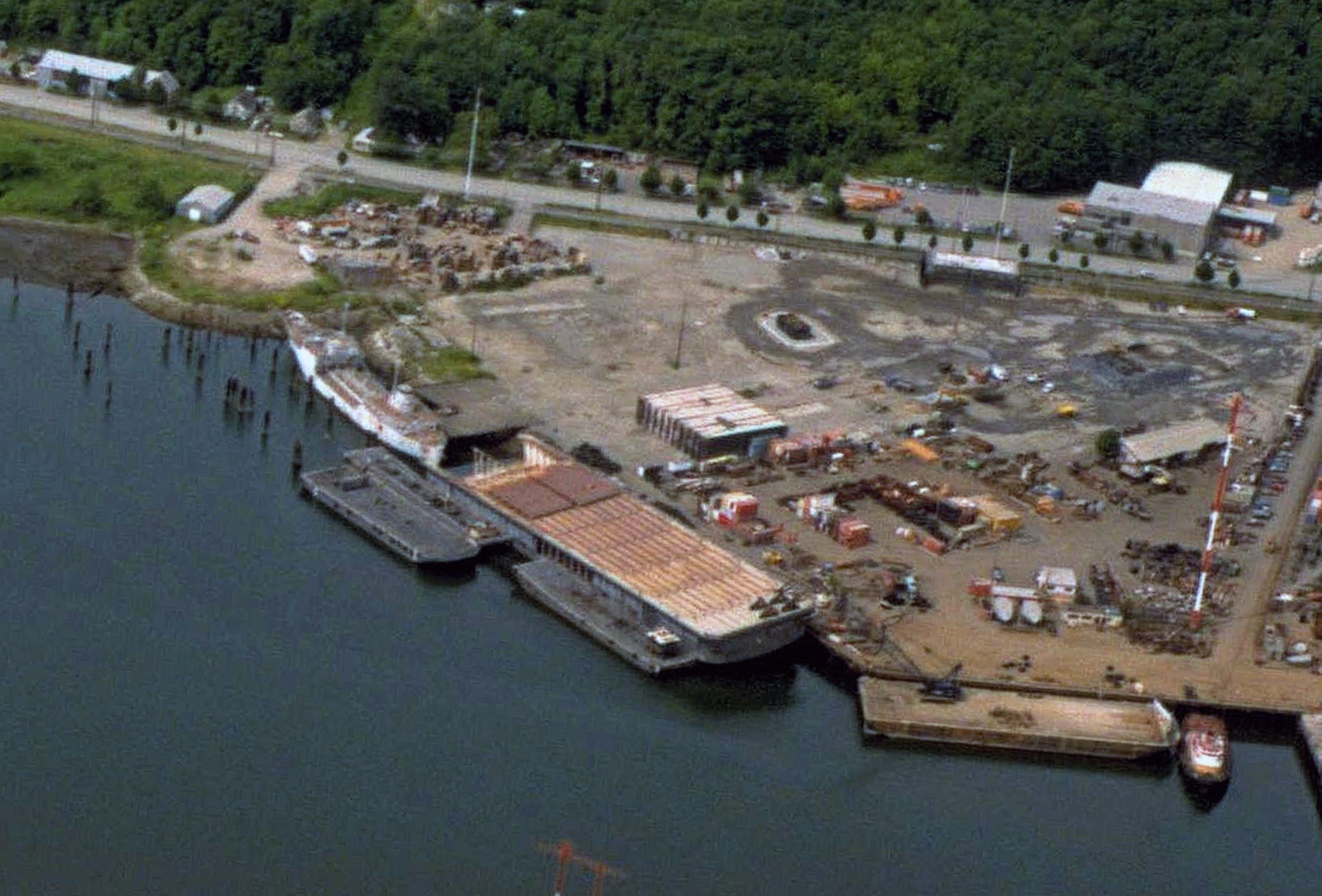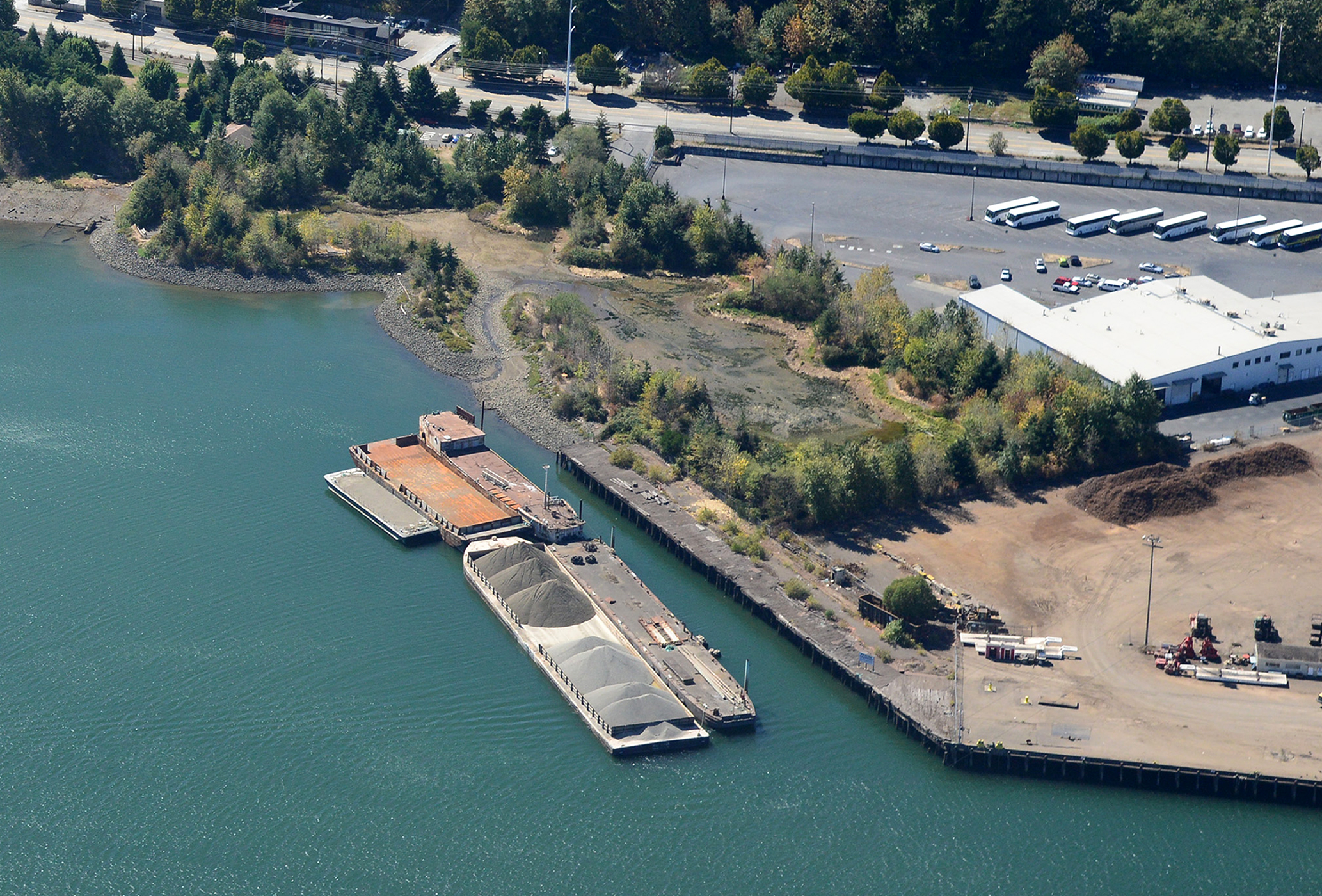Lower Duwamish Waterway
Integrated Remediation and Ecosystem Restoration
An early example of the Nature-based Engineering, and multidisciplinary collaborative approach, which reverted contaminated industrial property to productive habitat.
The former Seaboard Lumber site is located at River Mile 2 on the Lower Duwamish River, and operated from 1929 through 1984. This 17-acre restoration site is located within the last remaining remnant of the original Duwamish River in an oxbow across from Kellogg Island. The City of Seattle purchased the site to provide public shoreline access and habitat as mitigation for development projects. In the 1990s, the City’s Department of Parks and Recreation and the Elliott Bay/Duwamish Restoration Program Panel (EBDRP) spearheaded efforts for restoring aquatic habitat in the Duwamish River system to protect and enhance critical fish and wildlife habitat. The Department of Parks was also interested in providing limited passive recreation and public education opportunities.
As coastal engineer and project manager employed by a waterway engineering consultant, and working with a multidisciplinary team led by J.A. Brennan Associates, Lally performed conceptual and final engineering design for this integrated remediation and habitat improvement project. Specific work included wave and vessel wake modeling and coastal processes analyses; engineering of dredging / excavation, shoreline stabilization, and intertidal lagoon channel entrance designs; assistance with permit acquisition, contract plans and specifications, and marine-related construction oversight.
The remediation project removed derelict structures, a dock, creosote pilings, pavement, and over 16,000 cubic yards (cy) of soil and sediment contaminated with PAHs, PCBs and heavy metals, with extensive re-grading to establish an emergent intertidal marsh. To support juvenile salmonids, the site would create a protected low-energy environment with backwater pools to provide refuge, food sources and established areas of high intertidal salt marsh vegetation with a protective buffer of upland riparian vegetation.


Lally developed a Nature-based Engineering approach for shoreline protection and nearshore ecosystem enhancement components, including design of two armored, curvilinear spits forming a mouth opening to the Duwamish River. The spits were oriented to protect the intertidal lagoon from impinging wind wave and vessel wake forces from the adjacent federal navigation channel, and created a meandering intertidal salmon access channel to the 1.8-acre intertidal marsh set at elevations between +6 and +12 feet MLLW. The shoreline erosion control system incorporated engineered slopes and cap components to withstand the site’s wave forces and contain residual contamination. Rounded cobblestones and fish mix (3/8-in minus pea gravel – course sand) were incorporated in the intertidal access channel and channelward revetment to create salmonid habitat. The access channel geometry was configured to promote self-flushing in order to minimize sedimentation over the habitat substrate. Working with the Muckleshoot Indian Tribe, several fishing access features were also incorporated into the shoreline and offshore project design.
Construction of the Seaboard Lumber Aquatic Restoration Project was completed 1998 – 1999, and the site was later re-dedicated as Herring’s House Park. This site has since provided juvenile salmon with feeding and resting area essential in their lifecycle between freshwater environments upriver and the salt water of Puget Sound and beyond.
Expertise
Field Investigations
Coastal Processes Analyses
Engineering with Nature Shoreline Erosion Control
Cost Estimates
Contract Plans and Specifications
Construction Oversight
Location
Seattle, Washington, USA
Period
1997 – 2001
A quarter of a century later, this Integrated Remediation and Ecosystem Restoration project continues to function as designed, and serve as an early example to advance knowledge for further aquatic restoration developments in the Lower Duwamish Industrial corridor and beyond.